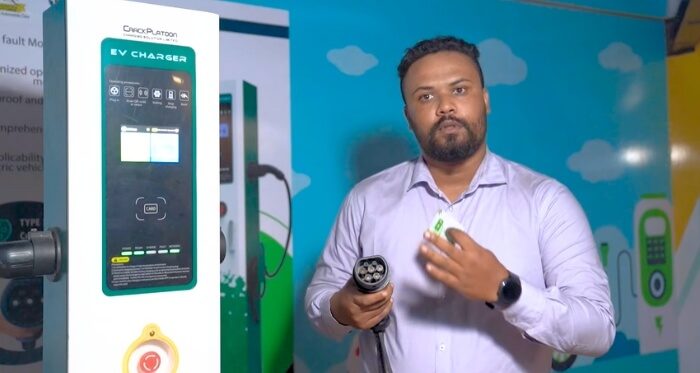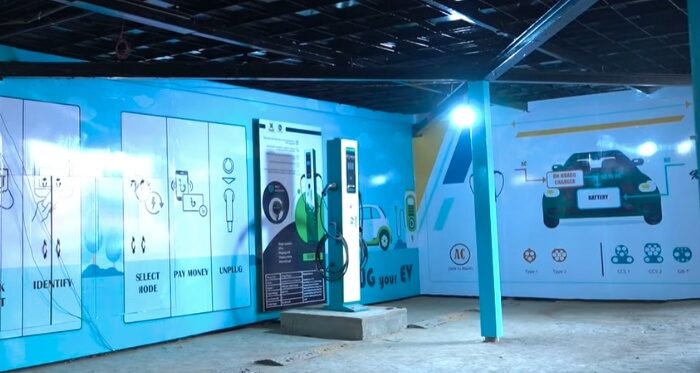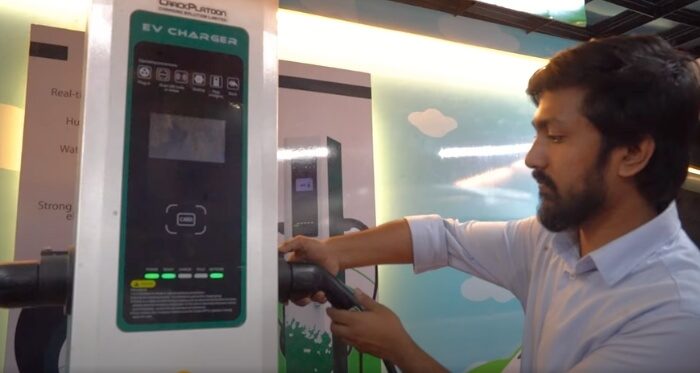A beacon of sustainable transport is the Electric Vehicles. That emerged rapidly in the recent past. Many have shown interest in these newly arrived vehicles. From investors or manufacturers to the fans of high-tech transport. However, in this electric revolution, a common query arises: “Do all EVs use the same charger?”
No, they don’t. Because they utilize different connectors and charging systems. If you are not in a rush, slow charging options like AC chargers will be enough to fulfill your needs. They involve Type 1 and Type 2 connectors, and those that require speed charging will have to prefer the DC fast chargers like CHAdeMO or the Combined Charging System (CCS).
Here, we dive into the intricate world of EV charging, guiding you through the maze of connectors and standards to ensure your EV experience is as smooth as the ride itself. Join us as we explore this electrifying topic in detail.
A Quick Overview of EV charging in Bangladesh
In Bangladesh, the shift towards Electric Vehicle (EV) adoption is gaining momentum. People are increasingly drawn to EVs due to the rising cost of conventional fuel. This transition is expected to be even quicker than the adoption of hybrid vehicles, possibly bypassing the plug-in hybrid phase.
Government policies like the Automobile Industry Development Policy 2021 and the Electric Vehicle Registration & Operation Policy 2023 are clear indicators of the country’s commitment to EVs. Furthermore, the acceptance of electric 3-wheelers (e3W) into the transportation sector demonstrates Bangladesh’s ongoing electrification efforts, which began in 2007 with the introduction of EVs on its roads.
The Crackplatoon CSL has brought these services to the doorsteps of EV owners in Bangladesh. To run a smoother EV journey for the users of Bangladesh, they are providing EV charging stations according to the needs of the users of this region. They have both AC and DC types of charging stations.
Do All EVs Use the Same Charger?
Most EVs can be charged with the same charger. But the charging speed differs for the charger types. Because AC types of chargers are typically slower than the DC charging method. Also, their connectors differ from one another.

Most EVs are compatible with the level 1 and level 2 AC Charging methods and have J1772 connectors. Which are compatible with all EVs. But with Tesla’s emergence, there are options for Fast charging connectors. They have CHADeMo and CCS connectors for their EV. These are compatible with level 3 or DC fast charging.
For Bangladeshi EV users, Crackplatoon EV charging is compatible with type 1, type 2, and GB/T in AC charging stations. And connectors for the DC RUMI71 model are CCS1, CCS2, and CHAdeMO.
So, the question ‘Do all EVs use the same charger?’ hinges on various factors. To understand the subject properly knowing these factors will open up the proper concept. Here we explain these factors briefly.
Connector Types
The most common type of connector for AC charging is Type 1, which is also known as J1772 in North America. This connector is commonly found on older EV models and is suitable for charging at home or Level 2 public charging stations.
Besides this, there are Type 2 connectors. These also known as Mennekes Connectors, are more prevalent in Europe and have become a global standard for AC charging. They offer faster charging speeds and are compatible with a wider range of EVs. Type 2 connectors are commonly used for Level 2 charging stations and can support both single-phase and three-phase charging.
For DC fast charging, there are two prominent standards: CHAdeMO and CCS (Combined Charging System). CHAdeMO was initially developed by Japanese automakers and is commonly used by Asian car manufacturers.
However, CCS has gained widespread adoption in North America and Europe, making it a global standard. CCS connectors combine AC and DC charging capabilities in one plug, making them versatile for various EVs.
Charging Speeds
Another factor is related to the charging speeds of EV chargers. They significantly differ between AC (Alternating Current) and DC (Direct Current) charging methods, catering to various charging needs and scenarios.
AC charging, often utilized at home or Level 2 public charging stations, is known for its reliability and safety. It typically provides slower but steady charging, making it suitable for overnight charging or when you have more time.
Crackplatoon’s model MIHIR52 provides a level 2 AC charging. Which provides 7-22 kWh power for single output as all the international EV charging stations do. For double output, they provide 86-142 kWh of power.
Also, Crackplatoon CSL offers DC-type charging stations. Which caters to the double outlet and power ranges from 60-240 kWh. The input voltage required is 400 VAC for the DC RUMI71 model. It has an easy user interface, which includes an emergency stop button, LED indicator, card Swiping, touch screen, and Smartphone APP accessibility.
When choosing between AC and DC charging, it’s essential to consider your specific needs and the availability of charging infrastructure. AC charging is convenient for daily use, providing a reliable way to keep your EV topped up, while DC fast charging offers the flexibility to charge rapidly when you’re on the go.
Vehicle Specifics
The most vital factor related to the EV models. They can have unique charger requirements. So, ensuring compatibility depends on the vehicle’s design and manufacturer.
The type of charger a specific EV model requires is primarily determined by the vehicle’s battery capacity and charging capability. Some EVs have smaller batteries and are designed for more moderate charging speeds, while others boast larger batteries and can handle faster charging rates.
For instance, a compact city EV may have a standard Type 2 connector for AC charging, designed for everyday urban use. A high-performance electric sports car might be equipped with a DC fast-charging capability using a CCS connector to provide quick charging for long trips.
To ensure optimal charging, EV owners must know their vehicle’s charger requirements. This information can typically be found in the owner’s manual or provided by the manufacturer. It’s essential to match the charging equipment with your EV’s specifications to maximize charging efficiency and safety.
So, the charging speed varies between AC and DC charging methods. AC chargers are slower but reliable, while DC chargers offer rapid charging. Connector types also play a vital role in the charger’s compatibility depending on the regions and the vehicle models. Vehicle specifics also have a great impact on charger compatibility, with EVs having unique requirements based on battery capacity.
Fast Charging vs. Slow Charging: What’s the Difference?
The nuances of charging are important to know for the potential and existing EV owners. They are two distinct approaches for EV charging as we already discussed in previous sections. Both have their benefits and applications. To optimize the charging strategies EV owners must be aware of the shades of these charging methods. Here we briefly explain these methods for better insight.
It differs in the power ranging capacity. The flow of electricity is defined with amps. The total work done by the amp is defined as Kilowatts per Hour(kWh). Imagine, your battery capacity is 30kwh. Then it can be charged within 1 hour if it is provided with 30Kw on that hour.
Now, slow charging stations, they cater to 11 kWh, meaning 11 kW of work in one hour. Then it will take approximately 3 hours to charge your EV with the above-mentioned station. For DC fast charging stations their power starts from 60Kwh. So charging a vehicle whose battery is 30 kWh will take half an hour or 30 minutes with DCFC.
That’s the main difference between slow and fast charging stations, as their power capacity dictates the time required to charge an EV. Good news for Bangladeshi EV users, Crackplatoon Csl EV charging provides both AC and DC types of charging stations for the user of this region.
Can You Plug Any EV into Any Charging Stations?
The compatibility between electric vehicles (EVs) and charging stations is a vital aspect of the EV experience. Not all EVs can connect to every charging station, as different models have distinct charging requirements. It is essential to understand these compatibilities for efficient and hassle-free EV charging.

Connector Compatibility
Each EV has a specific type of connector, determining which charging stations it can use. Not all EV charging stations accommodate every connector type. This limits where certain EVs can be charged.
Some EV models require adapters to use certain types of charging stations. EV owners must know their vehicle’s connector type. EV charging station availability varies, influencing an EV owner’s charging options.
Charging Standards
Different EVs adhere to various charging standards like CHAdeMO or CCS. These standards dictate the compatibility with EV charging stations. Not all stations support every standard, impacting where an EV can be charged.
EV manufacturers often design vehicles to comply with regional charging standards. EV charging stations are equipped accordingly, but not universally. It is key to know these standards for seamless EV charging experiences.
The Methods of Finding Ideal EV Charging Station
Locating the perfect EV charging station can be a challenge for electric vehicle owners. As the network of stations expands, knowing how to find the right one becomes increasingly important. This task involves understanding the type of charger needed and the available resources to locate them.

Utilizing Apps and Websites
Many apps and websites provide comprehensive maps of EV charging stations. Users can filter results based on connector type or charging speed. Crackplatoon EV Charging, for instance, is listed with detailed information about its facilities.
These digital tools often include user reviews and real-time availability. They’re essential for planning trips or finding nearby charging options. Utilizing these resources makes finding the ideal EV charging station more accessible and efficient.
Network Subscriptions
Some EV charging networks offer subscription services with benefits like discounted rates. Subscribers can access a network’s charging stations, often with added convenience.
Subscriptions can provide access to exclusive or faster charging stations. They also simplify payment and tracking of charging history. Subscribing to a reliable network can streamline the process of finding and using EV charging stations.
Local Knowledge and Community Recommendations
Local EV communities are a valuable resource for finding ideal charging stations. Experienced EV owners often share insights about the best local stations.
These communities can provide tips about station availability and quality. Local forums, social media groups, and EV club meetings are great places to start. Leveraging community knowledge can lead to discovering convenient and reliable charging stations.
Tips for a Seamless Charging Experience
The growing popularity of EVs forces users to master EV charging methods. Effective charging not only improves sustainable use but also extends the life of your EV’s battery. Here are some key tips to ensure a seamless EV charging experience.

- Plan Your Charging: Research charging locations ahead of time, especially for long trips. Utilize apps to locate compatible charging stations and plan your route accordingly.
- Learn Your EV’s Needs: Know your vehicle’s charging specifications, including connector type and preferred charging speed. This ensures compatibility and efficient charging at available stations.
- Navigate Apps: Many EV charging station suppliers provide smart apps for the services. Crackplatoon Csl is one of them. They have smart app options that feature all the information of their services. Navigating these apps will benefit you to a smooth charging experience.
- Regular Maintenance Checks: Regularly inspect your EV charging port and cable for damage. Proper maintenance prevents charging interruptions and extends equipment lifespan.
- Opt for Overnight Charging: When possible, charge your EV overnight. This approach is more economical and reduces strain on the battery.
- Adapt to Weather Conditions: Charging efficiency can vary with temperature changes. In extreme weather, plan for potentially longer charging times.
- Use Fast Charging Judiciously: Reserve fast charging for long journeys or emergencies. Frequent fast charging can affect battery health over time.
- Be Considerate at Public Stations: Follow proper etiquette at public EV charging stations in Bangladesh. Unplug and move your EV once it’s fully charged to free up space for others.
Final Thought
The diverse landscape of electric vehicle (EV) charging highlights a significant point in response to the question, “Do all EVs use the same charger?”While basic models of chargers are the same. But with the ongoing development of new models of EVs, bringing new models of chargers in this sector. They are dictated by the different connector types and charging standards.
Learning these specifications is crucial for a seamless charging experience. From Type 1 and Type 2 connectors for AC charging to CHAdeMO and CCS for DC fast charging, the world of EV charging is rich with variety.
For Bangladeshi users, Crackplaoon CSL EV charging offers both AC and DC-type EV charging stations. Models like RUMI71 DC or MIHIR52 AC EV chargers fulfill all the requirements of EV charging in Bangladesh.
Adopting this diversity and preparing accordingly will ensure that EV owners enjoy the full benefits of their sustainable transportation choice, keeping them charged and ready for the road ahead.
